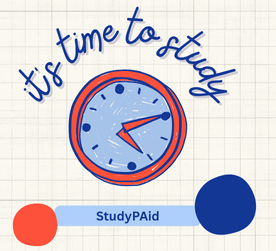Getting a student loan to cover the costs of your undergraduate or graduate degree is probably something you’re considering. In what time frame may one apply for a student loan? Students often ask questions like this. The answer could change depending on a number of factors, including the kind of loan, the lending institution, and how prepared you are with the necessary documents. This comprehensive guide will walk you through the schedules, what variables affect them, and how to speed up the process.
What Is a Student Loan?
Let’s talk about the moment after we define a student loan. Financial aid in the form of student loans is available to help defray the costs of higher education, including tuition, books, living expenses, and more. Two main types of student loans are available:
-
Students may apply for federal student loans via the U.S. Department of Education.
-
Private student loans are offered by businesses such as banks and credit unions.
How Long Does the Application Process for a Student Loan Typically Take?
A student loan’s processing time is conditional on the kind of loan you’re seeking. The typical schedule is summarized below:
The First Source for Federal Student Loans
The timeliness of federal student loans is predictable since they usually follow a controlled process.
Possible duration: one to three weeks
What Was Done:
-
Applying for Financial Aid: First things first, fill out the FAFSA, or Free Application for Federal Student Aid. This form is made available annually on October 1st.
-
After you submit the Free Application for Federal Student assistance (FAFSA), your school will probably send you a letter confirming your financial assistance award a few weeks later.
-
After accepting the loan offer, you are required to sign a Master Promissory Note (MPN) and complete entrance counseling.
-
Once these steps are complete, often about ten days prior to the start of classes, your institution will receive the disbursement of your loan.
Attention: If you are a first-year student or a first-time borrower, you have the option to postpone your first payment by 30 days following the start of your semester.
The Second Option: Private Student Loans
The terms of private student loans may vary more widely due to differences in the lending institution’s internal processes.
Duration: 2–10 weeks
What Was Done:
-
Use: Submit your application in its entirety along with any necessary supporting documents, such as proof of income, credit history, and current school attendance.
-
Private lenders do a credit check before approving a loan. The time it takes for clearance might range from a few hours to several days.
-
If you are applying with a cosigner, their financial information will also be reviewed.
-
It can take the lender up to two weeks to provide the loan paperwork to your school so they can certify it.
-
After certification, the school is often rewarded with funds within 5–10 business days.
Factors Influencing the Length of Time Required to Secure a Student Loan
The time it takes to receive your student loan funds could be impacted by the following:
a. Sort of Loan
Due to a standardized approach, private loans may take more time to close than government loans.
b. Precision of Application
Inaccuracies or missing information on your FAFSA or private loan application might cause major holdups.
c. School Accreditation
In order to qualify for federal and private loans, your institution must verify your enrollment. Some schools have lengthier processing times than others.
d. Season
Due to the high volume of applications, processing times may be longer during peak seasons (e.g., summer or just before the start of the semester).
f. Reports on Credit
Your credit history or the cosigner’s credit history might be the reason for the delay in approval for a private loan if more verification is required.
Tips for Streamlining the Application Process for Student Loans
Getting your student loan on time is important, so here are some tips to make the process go more quickly:
1. Get Your Application in Early
As soon as the FAFSA website goes live for October 1, begin researching private loan options. The sooner you apply, the sooner you will get your money.
2. Double-Check the Documentation
Whether you’re applying for a loan from the government or a private lender, be sure all of your paperwork is accurate and complete.
3. Go with Digital Processing
Make advantage of online payment systems and electronic mail wherever possible. It is much more time-consuming to process on paper.
4. Make an Arrival
Keep in regular contact with the financial aid office and any private lenders you may have. In the event that something is missing or delayed, you are free to act without delay.
After a Loan Is Disbursed, What Happens Next?
The typical use of funds from a student loan is to cover the following expenses at the school:
-
Taxes and course fees
-
Living expenses (if on campus)
-
Literature and reference
Any remaining funds will be returned to you to be used for your own educational purposes once these costs have been paid.
Answers to Common Questions
First Question: What is the typical approval time for a student loan?
Loans from the federal government: Almost immediately after your FAFSA is processed, you will get approval.
Private loan approval times might range from a few hours to a few weeks, depending on the lender.
Question 2: Is it necessary to apply for a student loan all at once?
No, the process for government loans is already set in stone. Complete reimbursement is still delayed due to school accreditation, even though some private lenders provide same-day pre-approval.
Question 3: What is the typical processing time for a student loan after approval is given?
Ten days before the start of the semester is the standard deadline for federal student loans.
Personal loans: within five to ten business days after graduation.
Question 4: What should I do if my student loan is late?
Have a conversation with your school’s financial aid office and your lender. In addition to helping to identify the bottleneck, they may also provide advice on how to remove it.
Question 5: May I apply for both federal and private student loans at the same time?
A large number of pupils really do. Government assistance is often prioritized, with private borrowing used to cover any shortfalls.
Final Thoughts: Arrange for Inner Calm
How long does the application process for a student loan typically take? As a general rule:
-
About a week to three weeks for federal loans
-
Time required for private funding: two to ten weeks
The timeliness of these dates are affected by a number of factors, including the correctness of your information, the rate at which your financial institution handles loan certifications, and the rate at which you submit your applications. To avoid setbacks, prepare ahead of time, keep an eye on your paperwork, and maintain continual communication with your lender and school.
Despite how daunting the prospect of applying for a student loan may seem, it is possible to keep the process on track and go off without a hitch if you are proactive and organized. The most important thing is your education, and this will let you focus on that.
